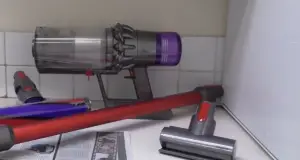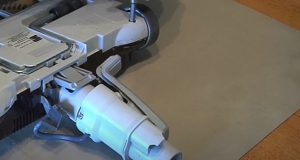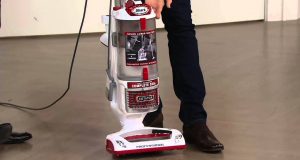Pressure Vacuum Breaker Work
How Does A Pressure Vacuum Breaker Work? A checking device, often known as a check valve and an air inlet that is vented to the atmosphere, make up a pressure vacuum breaker (open-air).
During typical conditions, the check valve allows water to pass while keeping the air intake close. The evacuate chamber opens when the air force exceeds the water pressure—breaking the low-pressure pulling effect and avoiding water backflow.
Before the water enters the sprinkler valves, a pressure vacuum breaker is position near the water supply. It must be put above the system’s top position, which is usually the topmost sprinkler head or the yard’s highest incline.
What Is A Pressure Vacuum Breaker
PVBs, or pressure vacuum breakers, are an integral part of irrigation systems. It protects your home’s freshwater supply—your drinking water—against backflow, or back siphoning, of water from the irrigation system. A PVB is usually positioned outdoors, either adjacent to an exterior wall or in a recess box in the ground, in most sprinkler systems. PVBs are install indoors in specific scenarios, commonly in a basement or crawl space near the irrigation system’s water shutoff.
The most frequent and least costly form of whole-system backflow protection valve is the pressure vacuum breaker assembly (PVBA). Installing, maintaining, and repairing these assemblies is a breeze.
Servicing
A pressure vacuum breaker requires very little maintenance. Parts may need to be repair every five years or according to the manufacturer’s recommendations.
Protecting the PVB from freezing during cold weather is an essential regular maintenance item. A vital aspect of winterizing a sprinkler system is draining the PVB during a sprinkler “blowout.”
Failure to exhaust a PVB might result in internal parts being damage or the PVB cracking or bursting, necessitating replacement. The valves on a PVB are typically open halfway after the sprinkler system is winterized to permit air to escape in the case that the remaining water inside the PVB solidifies.
Adjustments
A pressure vacuum breaker’s internal components can be damaged by freezing and regular use over time. Leaking from the valve’s bell or bonnet assembly is a sure sign that something isn’t working correctly. The company offers repair kits that are particular to each PVB model.
Turning off the intake and exit ball valves, then removing the bonnet assembly is a typical repair. Because the repair parts are put backward, it’s a good idea to maintain the components neatly order while they’re being remove. The water supply is then turn on when the repair parts have been place.
What Is Backflow
Backflow occurs when the water supply is interrupt or diminish, resulting in a drop in supply line pressure. As a result, water in the destination circuit siphons back into the supply line, similar to how fluid is pull up a drinking straw. Should the supply pressure drop or stop entirely, a pressure vacuum breaker will instantly isolate the freshwater supply in several ways.
To segregate freshwater supply, PVBs use a spring-loaded poppet-type valve. Normal network supply pressures are mean to push this valve open, allow water to pass to the target loop.
Types Of Vacuum Breakers
An atmospheric vacuum breaker is one sort of backflow preventer (AVB). This device has a kink in the shape of an elbow, as well as an internal valve that prevents the water from running backward. AVBs are straightforward to install, repair, and maintain because of their simple design. Before going any further with AVBs, it’s vital to go over the components that make up the devices. The following are some of them:
- A shutoff valve for the inlet (at the bottom)
- A single valve body is used.
- A check valve is a device that prevents something from happening
- Two timers for testing
- A shutoff valve for the outlet
The inlet valve at the bottom opens and closes in response to the flow of water. A check valve is open at the exact moment, allowing air to enter and creating the pressured effect.
Vacuum Breakers With A Spill-Resistant Design And A Pressure Vacuum Breaker Work
Water frequently leaks from AVBs and PVBs. A spill-resistant vacuum breaker is available for those who want to avoid this. SRVBs are similarly to AVBs and PVBs, with the exception that when the air intake is turned on, an additional portion seals in the water. SRVBs, like AVBs and PVBs, prevent back-siphonage but not backpressure.
Conclusion
Backflow prevention devices are require by most municipal construction rules for all water systems. Contamination of the water supply has far-reaching consequences; thus, prevention is crucial. Because most homes have only one water system for drinking water and all other household uses, including irrigation, pollution via cross-connections is always a possibility.




